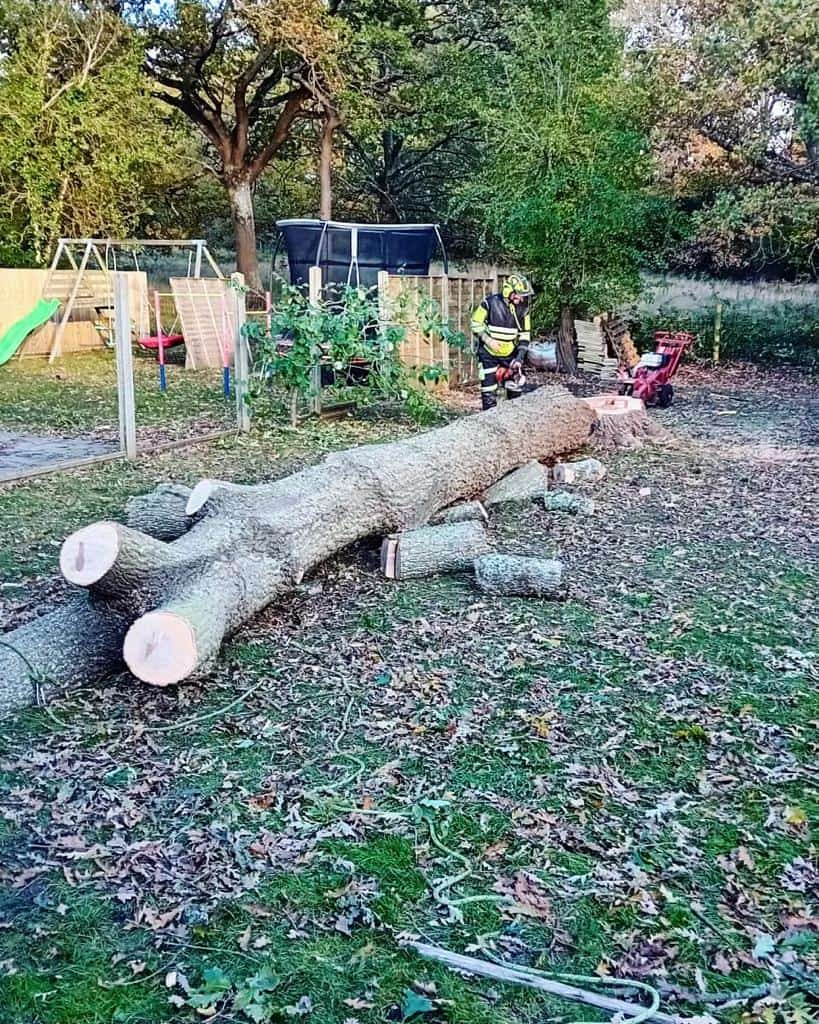When you look at a tree, you might admire its beauty, the shade it provides, or its role in your garden’s ecosystem. But when a professional tree surgeon examines that same tree, they see much more—potential hazards, structural weaknesses, and early signs of disease. At NS Tree Surgery Leatherhead, we understand that recognising these hidden risks is crucial to maintaining a safe and healthy environment for both your trees and your property. In this blog post, we’ll delve into the risks that tree surgeons can identify that may go unnoticed by the untrained eye.
1. Structural Integrity: Beyond Surface-Level Observation
One of the primary skills a tree surgeon brings to the table is the ability to assess the structural integrity of a tree. While a tree may appear healthy on the surface, internal issues can compromise its stability.
- Cracks and splits: Tree surgeons are trained to spot tiny cracks or splits in the trunk or branches that may indicate a weakened structure. These issues can pose a risk of branch breakage, especially during strong winds or storms.
- Leaning trees: While a slight lean in a tree may seem harmless, it can be a sign of root instability or internal decay. Tree surgeons use specialised tools and techniques to determine if a leaning tree poses a risk to nearby structures.
- Weak branch unions: Certain branches may be attached at weak angles or have included bark, which makes them more likely to break away from the main trunk. These weak unions are not always visible without a close inspection by a professional.
Identifying these structural weaknesses early allows for targeted pruning or support measures to strengthen the tree and prevent accidents.
2. Decay and Disease: Early Detection is Key
Trees, like any other living organisms, are susceptible to disease and decay. A tree surgeon can identify signs of health issues long before they become apparent to the average person.
- Fungal growth: Fungi growing on or around a tree can be a sign of internal decay. While a mushroom at the base of a tree might seem harmless, it can indicate rot within the roots or trunk, compromising the tree’s stability.
- Discoloured leaves and bark changes: A trained eye can recognise changes in leaf colouration, premature leaf drop, or unusual patterns on the bark as early symptoms of disease. Early intervention can prevent the spread of disease to other trees in your garden.
- Hollow sections: Even if a tree looks healthy from the outside, it may have hollow sections inside the trunk. Tree surgeons use tools like resistographs or ultrasound to detect these internal voids, helping to assess whether the tree can continue to stand safely.
By catching these issues early, a tree surgeon can recommend treatments or removal to prevent further decay and ensure the safety of your property.
3. Root Health: What Lies Beneath the Surface
The health of a tree’s root system is critical to its overall stability. Unfortunately, roots are often hidden underground, making it challenging for homeowners to assess their condition.
- Root rot and girdling roots: A tree surgeon can identify root rot, a condition where roots decay due to overwatering or poor drainage. They can also spot girdling roots, where the roots encircle the trunk and strangle the tree, limiting its growth and stability.
- Soil compaction: Compacted soil can suffocate a tree’s roots by limiting oxygen flow. Tree surgeons can assess soil conditions and recommend aeration or other techniques to improve root health.
- Signs of root damage: Construction, landscaping, or even heavy foot traffic can damage a tree’s roots. A tree surgeon can recognise symptoms like reduced growth, wilting, or dieback, which might indicate root damage that could lead to tree instability.
Understanding the condition of a tree’s root system allows for appropriate care and helps prevent unexpected falls or dieback.
4. Environmental Stressors: Factors You May Overlook
Trees are affected by their environment in ways that might not be immediately apparent to homeowners. Tree surgeons consider a wide range of environmental factors when assessing a tree’s health.
- Wind exposure: Trees growing in exposed areas may develop differently, with more stress on certain branches or a tendency to lean. A tree surgeon can recommend pruning or other measures to help a tree withstand strong winds.
- Soil erosion: If your property has a slope or is near a water source, soil erosion can destabilise a tree’s root system. Tree surgeons can identify erosion risks and suggest ways to stabilise the soil.
- Proximity to structures: A tree that is growing too close to a building, fence, or power line can become a problem as it grows larger. A tree surgeon will assess the potential risks and offer solutions to manage the tree’s growth without compromising safety.
Addressing these environmental stressors can help your trees thrive while minimising risks to your home and property.
Conclusion
Tree surgeons see more than meets the eye when they inspect a tree. From hidden structural weaknesses and early signs of disease to the unseen condition of roots and environmental factors, they bring a wealth of expertise that ensures your trees remain safe and healthy. At NS Tree Surgery Leatherhead, we provide thorough assessments and tailored solutions for every tree, ensuring that your property in Leatherhead, Surrey, remains secure and beautiful.
Call us on: 01372 679 098
Click here to find out more about NS Tree Surgery Leatherhead
Click here to complete our contact form and see how we can help with your tree needs.

